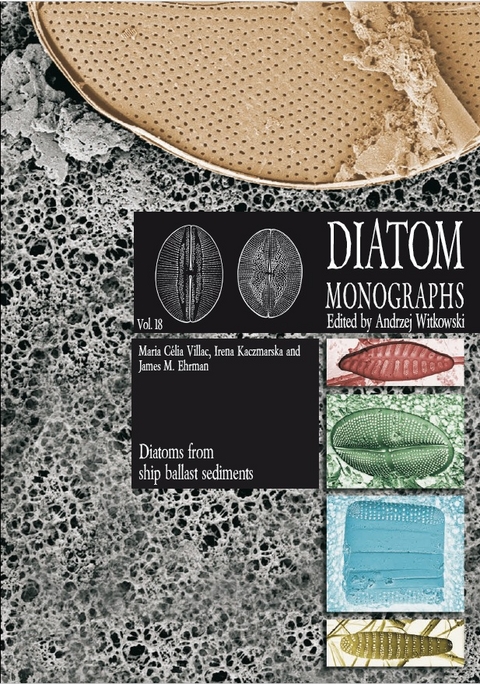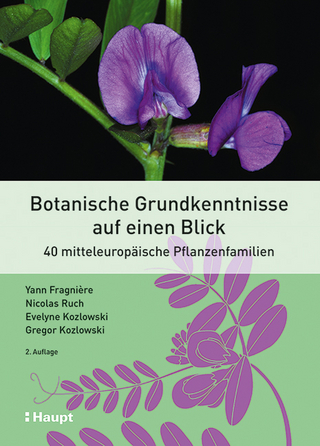
Diatoms from ship ballast sediments (with consideration of a few additional species of special interest).
Seiten
2017
Koeltz Botanical Books (Verlag)
978-3-946583-04-2 (ISBN)
Koeltz Botanical Books (Verlag)
978-3-946583-04-2 (ISBN)
- Keine Verlagsinformationen verfügbar
- Artikel merken
When ships need to take in water from the environment to serve as ballast, organisms and suspended inorganic materials are also picked up. During the voyage, some of the living and non-living particulate matter tends to settle to the bottom of the tank(s) and this sediment biota is thus transported between aquatic bioregions around the globe. This monograph presents the amazing biodiversity of diatoms carried in the sediments of ballast tanks of ships arriving at Canadian ports on the West coast (WC), East coast (EC), and the Great Lakes (GL) during 2007 and 2009. It illustrates 254 taxa (including morphotypes and genodemes) featured in 234 plates. Seventeen of these taxa were included in this study for their added interest to the topic as known aliens, invaders or toxin-producers, although they were detected in the ballast water rather than the sediment. The reader will also find some ecological information about these diatom stowaways detected during their brief stop in Canadian ports, coming from and going to a wide variety of locations in the worlds oceans and freshwater systems.
This contribution may aid those interested in diatom biogeography, particularly that layer of complexity which is added by human- mediated dispersal. The most speciose genera are: Thalassiosira (30 taxa), Pseudo-nitzschia (19 taxa), Chaetoceros (present as liberated spores, 16 taxa), Cyclotella (13 taxa), Shionodiscus (12 taxa), Paralia (8 taxa), Actinocyclus (5 taxa), Asterionellopsis (5 taxa), Aulacoseira (5 taxa), Melosira (5 taxa), Podosira (5 taxa), and Surirella (5 taxa). The following genera/families are among those for which diversity is still underestimated: Pleurosigmataceae, Navicula, Nitzschia, Cymbellaceae, and Fragilariaceae. The majority of the taxa had been previously reported as marine (50%) and marine-brackish (25%) species, followed by freshwater (11%) and fresh-brackish water ones (7%). A few taxa (7%) have been reported in brackish environments without known specific affinity for either fresh or marine systems. Planktonic species accounted for 55% of all taxa (37% of these
being Thalassiosiraceae), 36% were considered to be linked to bottom communities (epiphytic, epilithic, epipsammic and tychoplanktonic taxa), and 9% were planktonic taxa found as spores (Chaetoceros spp., Thalassiosira nordenskioeldii, Detonula confervacea, Ditylum brightwellii, Leptocylindrus spp., and Stephanopyxis nipponica).
Plates and figure captions immediately follow the species descriptions, rather than being grouped at the end of the text. Plates mostly contain SEM images, with a few LM illustrations. The appendix contains the complete data set, comprising a list of sediment samples with corresponding cell concentrations.
This contribution may aid those interested in diatom biogeography, particularly that layer of complexity which is added by human- mediated dispersal. The most speciose genera are: Thalassiosira (30 taxa), Pseudo-nitzschia (19 taxa), Chaetoceros (present as liberated spores, 16 taxa), Cyclotella (13 taxa), Shionodiscus (12 taxa), Paralia (8 taxa), Actinocyclus (5 taxa), Asterionellopsis (5 taxa), Aulacoseira (5 taxa), Melosira (5 taxa), Podosira (5 taxa), and Surirella (5 taxa). The following genera/families are among those for which diversity is still underestimated: Pleurosigmataceae, Navicula, Nitzschia, Cymbellaceae, and Fragilariaceae. The majority of the taxa had been previously reported as marine (50%) and marine-brackish (25%) species, followed by freshwater (11%) and fresh-brackish water ones (7%). A few taxa (7%) have been reported in brackish environments without known specific affinity for either fresh or marine systems. Planktonic species accounted for 55% of all taxa (37% of these
being Thalassiosiraceae), 36% were considered to be linked to bottom communities (epiphytic, epilithic, epipsammic and tychoplanktonic taxa), and 9% were planktonic taxa found as spores (Chaetoceros spp., Thalassiosira nordenskioeldii, Detonula confervacea, Ditylum brightwellii, Leptocylindrus spp., and Stephanopyxis nipponica).
Plates and figure captions immediately follow the species descriptions, rather than being grouped at the end of the text. Plates mostly contain SEM images, with a few LM illustrations. The appendix contains the complete data set, comprising a list of sediment samples with corresponding cell concentrations.
| Erscheinungsdatum | 16.01.2017 |
|---|---|
| Reihe/Serie | Diatom Monographs ; 18 |
| Zusatzinfo | 235 plates |
| Sprache | englisch |
| Gewicht | 1195 g |
| Einbandart | gebunden |
| Themenwelt | Naturwissenschaften ► Biologie ► Botanik |
| Schlagworte | Ballast • Diatomeen • Diatoms • Kieslalgen • ship ballast sediments |
| ISBN-10 | 3-946583-04-0 / 3946583040 |
| ISBN-13 | 978-3-946583-04-2 / 9783946583042 |
| Zustand | Neuware |
| Haben Sie eine Frage zum Produkt? |
Mehr entdecken
aus dem Bereich
aus dem Bereich
Gefäßpflanzen: Grundband
Buch | Hardcover (2021)
Springer Spektrum (Verlag)
44,99 €
40 mitteleuropäische Pflanzenfamilien
Buch | Hardcover (2021)
Haupt Verlag
36,00 €


